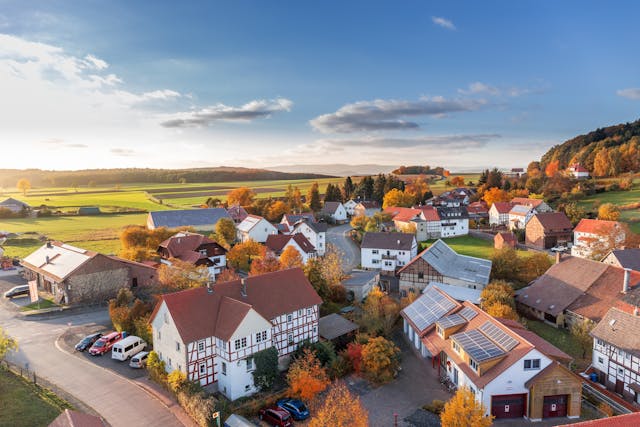- Efficient and well-maintained roads reduce accidents, enhance emergency responses, and boost economic growth.
- Good roads optimize travel, reducing emissions and advancing climate change mitigation efforts.
- Roads designed for cyclists and pedestrians encourage active transportation, promoting health and reducing pollution.
- Regular inspections, quality materials, and trained maintenance crews are pivotal for maintaining roads’ longevity and safety.
- An investment in good roads offers extensive dividends, from safety and health to economic prosperity and environmental sustainability.
A well-maintained and efficient road system is essential for the safety and well-being of the community. Good roads allow for smooth transportation, reduce the risk of accidents, and promote economic growth. On the other hand, poorly maintained and inadequate roads create a dangerous and uncertain environment for drivers, cyclists, and pedestrians, jeopardizing their safety. This blog will discuss the essential things you need to know about the role of good roads in the community’s safety.
Reducing the Risk of Accidents
One of the primary functions of good roads is to reduce the risk of accidents. An efficient road network, with well-maintained surfaces, clear markings, and sufficient lighting, creates a safe environment for drivers to navigate.
Poorly maintained roads, on the other hand, can lead to accidents due to potholes, cracks, and uneven surfaces that cause cars to lose control. Good roads also reduce the risk for pedestrians and cyclists, providing safe sidewalks and bike lanes that are separate from vehicle traffic.
Improving Emergency Response

A well-maintained road system is essential for emergency responders such as ambulances, fire trucks, and police cars to reach their destination quickly. In the case of an emergency, every second counts, and traffic congestion caused by poor road conditions or road design can cause critical delays. Good roads allow emergency vehicles to navigate efficiently, helping to save lives in emergency situations.
Boosting Economic Growth
Good roads play a pivotal role in promoting economic growth. Goods and services, including those produced and exported by local businesses, need a safe and reliable way to reach customers. Good roads also attract investment, leading to new business development and job creation. In contrast, poorly maintained and inadequate roads can hinder access to markets, restrain the circulation of goods and services, and slow down economic growth.
Addressing Climate Change
Good roads can reduce greenhouse gas emissions by optimizing travel routes to reduce distances. This means fewer cars on the road, leading to lower carbon dioxide emissions and other pollutants. Good roads with trees and greenery along the roadside can also help mitigate and adapt to climate change by absorbing carbon dioxide and reducing the urban heat island effect.
Encouraging Active Transportation
Good roads provide safe infrastructure not only for cars but also for cyclists and pedestrians, increasing the appeal of active transportation. This not only promotes healthy living but also reduces traffic congestion and air pollution. Good roads have safe bike lanes and sidewalks, ample lighting, and traffic calming measures to reduce the risk of accidents.
Maintaining Good Roads

Maintaining good roads is a continual effort that requires strategic planning, regular assessments, and proactive repairs. Regular maintenance of roads ensures their longevity, safety, and efficiency. Here are the most crucial points to consider in maintaining good roads:
Regular Road Inspections
Periodic inspections allow for the early detection of road damage like potholes, cracks, and wear. Early identification permits timely repairs, preventing small problems from turning into larger, more expensive issues and helping to ensure the safety of road users.
Adequate Drainage Systems
A strong, well-maintained drainage system is key to preventing water accumulation, which can lead to road damage. Regular clearing of drains and ditches can help protect road surfaces.
Timely Repairs and Resurfacing
When road damage is detected, timely repairs are crucial to preventing further degradation. Depending on the extent of the damage, resurfacing, or even full reconstruction, may be necessary to maintain a road’s safety and functionality.
Additionally, partnering with experts in road patch repairs can help ensure efficient and long-lasting solutions for road maintenance. They have the knowledge, skills, and equipment to perform repairs that meet safety standards and prevent further damage.
Use of High-Quality Materials
Using the right materials in patch repairs for the road is crucial to maintaining its longevity. High-quality materials are more durable and can withstand heavy traffic, reducing the need for frequent repairs.
Regular Training for Maintenance Crews
Maintaining good roads is a skilled job, and regular training for maintenance crews is essential. This ensures they are up-to-date with the latest methods and technologies used in road maintenance, enhancing their efficiency and the quality of their work.
The impact of a well-maintained road system extends beyond providing a smooth ride for travelers. It plays a paramount role in ensuring the safety of its users, enhancing the efficiency of emergency response, promoting economic growth, addressing climate change, and encouraging active transportation. The regular maintenance of roads is an ongoing endeavor that is crucial for the well-being of the community and the prosperity of the region.
Investing in high-quality materials and regular training for maintenance crews can ensure that these objectives are met. By understanding the vital role of good roads in our daily lives, we can acknowledge the importance of the efforts made to maintain them and advocate for continued investment in this essential infrastructure.

